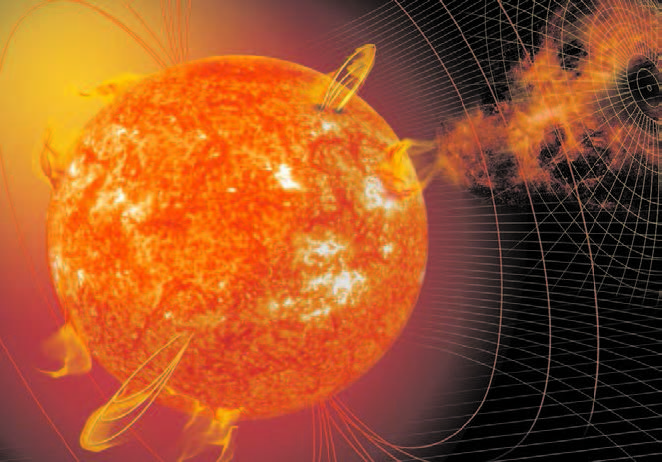
WASHINGTON (TIP): Not just planet Earth but the Sun too experiences seasonal changes, finds a significant research. By better understanding how these seasonal instabilities are formed one can greatly improve forecasts of space weather events.
According to a team of researchers led by the Colorado-based National Centre for Atmospheric Research
(NCAR), Sun undergoes a type of seasonal variability with its activity waxing and waning over the course of nearly two years.
This behaviour affects the peaks and valleys in the approximately 11-year solar cycle, sometimes amplifying and sometimes weakening the solar storms that can buffet the Earth’s atmosphere.
The quasi-annual variations appear to be driven by changes in the bands of strong magnetic fields in each solar hemisphere.
These bands also help shape the approximately 11-year solar cycle that is part of a longer cycle that lasts about 22 years.
“What we are looking at here is a massive driver of solar storms,” said Scott McIntosh, lead author and director of the NCAR’s high altitude observatory.
The overlapping bands are fueled by the rotation of the Sun’s deep interior, according to observations by the research team.
As the bands move within the Sun’s northern and southern hemispheres, activity rises to a peak over a period of about 11 months and then begins to wane. “The quasi-annual variations can be likened to regions on Earth that have two seasons, such as a rainy season and a dry season,” McIntosh added. McIntosh and his team detected the twisted, ring-shaped bands by drawing on a host of NASA satellites and ground-based observatories that gather information on the structure of the Sun and the nature of solar flares and coronal mass ejections (CMEs).
Researchers can turn to advanced computer simulations and more detailed observations to learn more about the profound influence of the bands on solar activity.
The findings can help lead to better predictions of massive geomagnetic storms in Earth’s outer atmosphere that sometimes disrupt satellite operations, communications, power grids, and other technologies, concluded the study published in the journal Nature Communications.




Be the first to comment